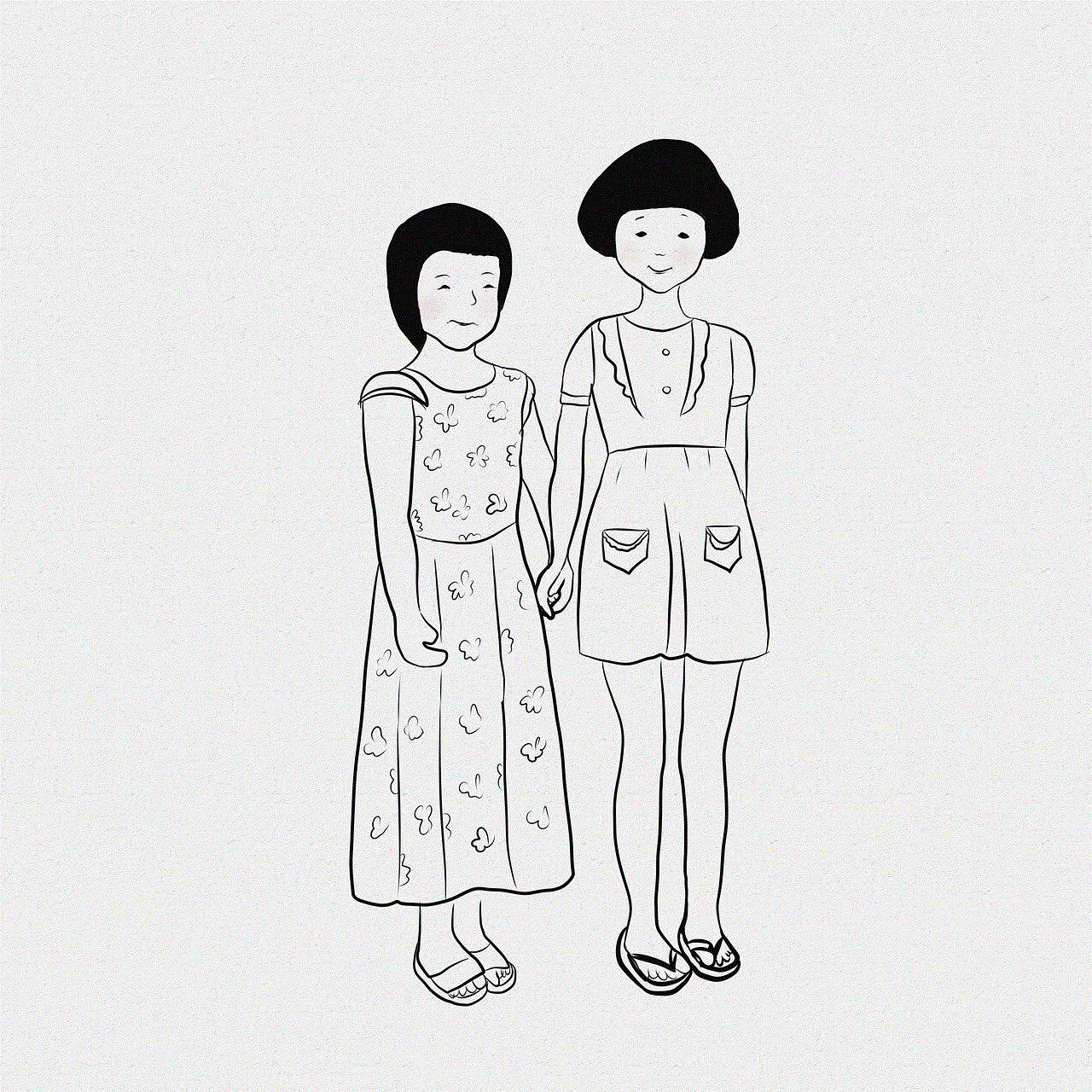snapchat child filter
Title: The Snapchat Child Filter: An Entertaining and Controversial Feature
Introduction:
Snapchat, the popular social media platform known for its innovative filters and fun features, has introduced a new filter that has taken the internet by storm – the Snapchat Child Filter. This filter allows users to transform their appearance to that of a child, creating adorable and often hilarious results. While the filter has gained immense popularity for its entertainment value, it has also sparked controversy and raised concerns about privacy, age verification, and potential misuse. In this article, we will explore the Snapchat Child Filter in detail, discussing its features, impact, benefits, drawbacks, and potential implications.
1. Understanding the Snapchat Child Filter:
The Snapchat Child Filter is a digital image filter that uses augmented reality to morph the user’s face, making them appear as if they were a child. The filter applies various effects to the face, including smoothing skin, enlarging eyes, and shrinking facial features, resulting in a more youthful appearance. Users can then capture photos or record videos with this filter, allowing them to share their transformed selves with friends and followers.
2. The Popularity of the Snapchat Child Filter:
Since its release, the Snapchat Child Filter has become incredibly popular, with millions of users trying it out and sharing their transformed photos and videos on various social media platforms. People enjoy experimenting with the filter’s effects and find delight in seeing their adult selves transformed into adorable, youthful versions.
3. Entertainment Value and Creative Possibilities:
One of the biggest appeals of the Snapchat Child Filter is its entertainment value. It allows users to have fun and create lighthearted content, bringing joy to themselves and their online communities. Many individuals enjoy using the filter for creative purposes, such as making funny videos or recreating childhood memories with friends and family.
4. Controversy and Ethical Concerns:
Despite its popularity, the Snapchat Child Filter has also faced criticism and sparked ethical concerns. Some argue that the filter could potentially be misused, allowing individuals with malicious intent to create inappropriate or harmful content involving children. Others express concerns about age verification, as the filter does not have a strict age restriction, potentially allowing underage users to access and use it.
5. Impact on Privacy and Data Security:
Privacy is another significant concern associated with the Snapchat Child Filter. When using the filter, users grant Snapchat access to their facial data, which raises concerns about how this data is stored, used, and potentially shared with third parties. Critics worry about the implications of this data collection, as well as the potential for facial recognition technology to be abused or compromised.
6. Positive Impacts and Benefits:
Despite the controversy, the Snapchat Child Filter offers some positive impacts and benefits. It allows people to explore their creative side, fostering self-expression and encouraging users to think outside the box. The filter also helps build connections and brings people together through shared amusement and entertainment.
7. Parental Control and Education:
To address the concerns surrounding the Snapchat Child Filter, it is essential for parents and guardians to be aware of the platform’s features and encourage open communication with their children. Educating young users about responsible social media use, privacy settings, and potential risks can help mitigate the negative impacts and ensure a safer online experience.
8. Ethical Responsibility of Social Media Companies:
The introduction of the Snapchat Child Filter raises questions about the ethical responsibilities of social media companies. They must strike a balance between providing entertaining features and protecting their users, particularly vulnerable groups such as children. Implementing stricter age verification measures, improving data security, and monitoring the use of filters are steps that companies should consider to ensure user safety.
9. Future Developments and Improvements:
As technology continues to advance, Snapchat and other social media platforms should invest in research and development to enhance the safety and security features of their filters. Improved age verification algorithms, stricter content moderation, and user-friendly privacy settings can help address the concerns associated with the Snapchat Child Filter and similar features.
10. Conclusion:
The Snapchat Child Filter offers a unique and entertaining experience for users, allowing them to transform into adorable versions of themselves. However, its popularity comes with ethical concerns surrounding privacy, age verification, and potential misuse. As users, parents, and social media companies, it is crucial to navigate these concerns responsibly while enjoying the creative possibilities offered by such filters.
skype can’t remove message
Skype is a popular communication platform that allows individuals and businesses to connect with each other through voice and video calls, instant messaging, and file sharing. With over 300 million active users worldwide, Skype has become an essential tool for staying connected with friends, family, and colleagues.
One of the key features of Skype is the ability to send and receive messages. This feature allows users to have real-time conversations with others, regardless of their location. However, there may be instances where a user wishes to remove a message they have sent on Skype. Whether it’s a typo, a message sent to the wrong person, or a message that was meant to be private, the need to remove a message on Skype may arise. Unfortunately, this is not always possible, and many users have encountered the frustrating issue of not being able to remove a message on Skype.
In this article, we will explore the reasons why Skype can’t remove messages and provide possible solutions to this problem.
1. Technical Limitations
The most common reason why Skype can’t remove messages is due to technical limitations. When a user sends a message on Skype, it is stored on the recipient’s device and on Skype’s servers. This means that even if a user deletes the message from their device, it will still be present on the recipient’s device and on Skype’s servers. This is a security measure to ensure that messages are not lost in case of a device malfunction or loss.
2. System Updates
Another reason why Skype can’t remove messages is due to system updates. Skype regularly updates its platform to improve its features, security, and performance. These updates may include changes to the message removal feature, which could result in it not functioning as it previously did. In some cases, a system update may cause a glitch in the message removal feature, making it temporarily unavailable.
3. Message Deletion Time Limit
Skype allows users to delete messages within a specific time limit. This time limit varies depending on the type of message and the platform being used. For example, on the Skype desktop app, users can only delete messages within 1 hour of sending them. However, on the Skype mobile app, users have up to 24 hours to delete a message. If the time limit has passed, the message cannot be removed, and the user will receive an error message.
4. Messages Sent to Multiple Contacts
If a user sends a message to multiple contacts on Skype, they will not be able to remove it. This is because the message is stored on each recipient’s device and on Skype’s servers. Removing the message from one recipient’s device will not delete it from the others. In this case, the only solution is to ask each recipient to delete the message from their device.
5. Group Conversations
Similar to messages sent to multiple contacts, if a user is part of a group conversation on Skype, they will not be able to remove a message. This is because the message is stored on each group member’s device and on Skype’s servers. Even if the message is deleted from one user’s device, it will still be present on the others. The only solution is to ask the group members to delete the message from their devices.
6. Errors in Message Removal Feature
There have been instances where Skype’s message removal feature has experienced errors, resulting in messages not being removed. In such cases, the only solution is to wait for Skype to fix the issue. Users can report the problem to Skype’s customer support team, who will work on resolving the issue as soon as possible.
7. Message Syncing Issues
Another reason why Skype can’t remove messages is due to message syncing issues. This can occur when a user has multiple devices logged into their Skype account, such as a smartphone, tablet, and computer . If a message is deleted from one device, it may not be deleted from the others due to syncing issues. This can cause confusion and frustration, as the user may think the message has been removed when in reality, it is still present on their other devices.
8. Deleted Messages Still Appearing
In some cases, a user may delete a message on Skype, but it continues to appear in their chat history. This can be a cause of concern, especially if the message contained sensitive information. This issue can occur due to a bug in the system or due to a corrupt chat history. In such cases, the only solution is to contact Skype’s customer support team for assistance.



9. User Error
Sometimes, the reason why Skype can’t remove messages is simply due to user error. Users may accidentally delete the wrong message, not realizing that it cannot be retrieved. They may also delete a message and later regret it, not realizing that it is permanently deleted. To avoid such situations, it is essential to double-check before deleting a message on Skype.
10. Privacy Concerns
Lastly, Skype may not allow users to remove messages due to privacy concerns. In some countries, there are laws that require communication platforms to store messages for a certain period for security and legal purposes. Skype may not allow users to delete messages to comply with these laws. This can be frustrating for users who value their privacy, but it is necessary for Skype to adhere to the laws of the countries it operates in.
In conclusion, there can be various reasons why Skype can’t remove messages. From technical limitations to user errors, there are many factors that can affect the message removal feature. While it can be frustrating for users, it is essential to understand that these limitations are in place to protect the security and privacy of users. If you encounter any issues with removing messages on Skype, it is best to contact their customer support team for assistance. With continuous updates and improvements, we can hope that Skype will address these issues and make the message removal feature more efficient in the future.
how to remove restricted mode on tiktok
TikTok has become one of the most popular social media platforms in the world, with millions of active users sharing short video clips every day. With its easy-to-use interface and wide range of features, it has become a favorite among people of all ages. However, like any other social media platform, TikTok also has its own set of rules and regulations to ensure a safe and positive environment for its users. One of these rules is the restricted mode, which is designed to filter out inappropriate or sensitive content. In this article, we will discuss what restricted mode on TikTok is, why it is important, and how to remove it.
What is Restricted Mode on TikTok?
Restricted mode on TikTok is a feature that allows users to control the type of content they see on the app. It is primarily designed to filter out content that is not suitable for younger audiences, such as violence, nudity, and profanity. When the restricted mode is enabled, it limits the visibility of such content, making the app safer for children and teenagers to use.
Why is Restricted Mode Important?
As mentioned earlier, the primary purpose of restricted mode is to create a safe and positive environment for all users, especially for younger ones. With the rise of cyberbullying and online predators, it has become crucial for social media platforms to take necessary measures to protect their users. This is where restricted mode comes in. By filtering out inappropriate content, it reduces the risk of children and teenagers being exposed to harmful content, thus making the app a safer place for them to explore and express themselves.
Apart from this, restricted mode also allows parents to have more control over what their children are exposed to on TikTok. With the increasing use of smartphones and the internet, it has become challenging for parents to monitor their children’s online activities. The restricted mode on TikTok gives them peace of mind, knowing that their children are not being exposed to inappropriate content on the app.
How to Enable Restricted Mode on TikTok?
By default, the restricted mode on TikTok is turned off for all users. However, if you want to enable it, follow these steps:
1. Open the TikTok app on your device.
2. Tap on the profile icon at the bottom right corner of the screen to go to your profile page.
3. Tap on the three dots icon at the top right corner of the screen to open the settings.
4. Scroll down and tap on “Digital Wellbeing.”
5. Toggle on the “Restricted Mode” option.



6. You will be asked to enter a four-digit passcode to turn on the restricted mode. Enter the code and tap on “Continue.”
7. Once the restricted mode is enabled, you can further customize it by selecting the content categories you want to filter out.
How to Remove Restricted Mode on TikTok?
If you want to remove the restricted mode on TikTok, follow these steps:
1. Open the TikTok app on your device.
2. Tap on the profile icon at the bottom right corner of the screen to go to your profile page.
3. Tap on the three dots icon at the top right corner of the screen to open the settings.
4. Scroll down and tap on “Digital Wellbeing.”
5. Toggle off the “Restricted Mode” option.
6. You will be asked to enter the passcode that you set while enabling the restricted mode. Enter the code and tap on “Continue.”
7. The restricted mode will be turned off, and you will have access to all types of content on TikTok.
Alternatively, you can also remove the restricted mode by logging out of your TikTok account and logging back in. This will reset all the settings, including the restricted mode.
Tips for Parents to Keep Children Safe on TikTok
While restricted mode on TikTok can filter out inappropriate content, it is not foolproof. Children can still come across sensitive content through other means, such as through other users’ profiles or hashtags. Therefore, it is essential for parents to stay vigilant and take necessary precautions to keep their children safe on TikTok. Here are a few tips for parents:
1. Talk to your child about the potential risks of using social media and educate them on the appropriate behavior.
2. Monitor your child’s activities on TikTok, and set boundaries for the amount of time they spend on the app.
3. Make sure your child’s account is set to private, so only approved followers can view their content.
4. Encourage your child to come to you if they come across any inappropriate content or experience any form of cyberbullying.
5. Use parental control apps to monitor your child’s online activities and block access to certain apps or websites.



6. Keep an open dialogue with your child about their online activities and encourage them to talk to you if they face any problems.
In conclusion, restricted mode on TikTok is a useful feature that can help create a safer and more positive environment for all users, especially for children and teenagers. By enabling it, parents can have more control over what their children are exposed to on the app. However, it is important to remember that it is not a foolproof solution and parents should stay vigilant and take necessary precautions to keep their children safe on TikTok. By following the tips mentioned above, parents can ensure that their children have a safe and enjoyable experience on the app.